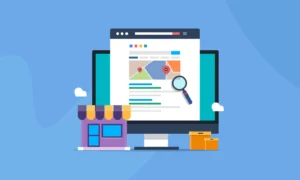Influencer marketing has really taken off in the last few years. From its “Wild West” beginnings, it has settled into a clear role within the marketing industry, and best practices have been established. It’s no longer as risky to use influencer marketing as it was a few years ago, but marketers still need to make smart strategic choices.
Partnering with influencers is essentially the latest word-of-mouth strategy, which can make it highly effective. People are much more likely to buy a product that has been recommended by someone they trust, whether it’s a friend or an influencer. As with any marketing strategy, however, it’s important to pay attention to the potential ROI.
So, how can companies use influencer marketing to their advantage? What are the benefits of this popular strategy? Here’s what you need to know before you get started.
The Benefits of Influencer Marketing
Digital marketing is an ever-evolving landscape. When it comes to social media marketing, however, influencer marketing has become one of the most profitable strategies. According to Mediakix, about 90% of marketers find that influencer marketing delivers some of the best ROI of any marketing channel.
Companies have been borrowing influence for marketing purposes since ancient times. Celebrities and athletes endorse products and sponsorships take advantage of an influential person’s audience to sell more products. Today, though, influence isn’t limited to high-profile individuals—anyone with an engaged audience can be an influencer.
The benefit of this is that companies don’t have to pay big bucks in order to get a celebrity to promote their products. Instead, they can partner with smaller influencers at a lower cost. This improves the effectiveness of the campaign and the overall ROI.
Influencer marketing builds brand awareness. It’s a great way to quickly spread the word about new products and to create loyalty. The trust that people have in their favorite influencers transfers to the companies they promote.
For businesses focused on consumer goods, influencer marketing is almost a must. The potential benefits are enormous and can lead to even more word-of-mouth growth.
Choose Your Platforms
Once you’ve decided to give influencer marketing a try, you need to start planning your strategy. Any marketing strategy can be an enormous waste of money if you don’t have a clear strategy based on best practices. There are lots of social media marketing mistakes you can make that could cause your influencer marketing campaigns to fail.
The first tactical decision you’ll need to make is which platforms to use. It’s important to focus your efforts on sites and apps where your audience spends their time. Spreading out your campaigns over as many platforms as possible is a recipe for disaster.
Not all social media platforms lend themselves to influencer marketing. Facebook, for instance, is better suited to advertising rather than influencer marketing. Highly visual platforms, like Instagram, TikTok, and YouTube are much better choices.
Take some time to think about which platform you want to start with. Could your brand benefit more from video or photo-based content? What are the demographics of your audience? Thinking about these factors will guide you in choosing the right platform for your influencer marketing strategy.
Your Campaign Goals
When most people think about influencer marketing, they don’t consider that there are different kinds of campaigns a business can run. The goals of an influencer marketing campaign can range from something as simple as getting new leads or building brand identity. Or, it can be a direct sales campaign.
Defining your goals is important before choosing your influencers. You have to be able to evaluate their audience and engagement through the lens of your campaign goals. Here are just some of the types of campaigns you can run with influencers:
- Sponsored content
- Guest posts
- Social media “takeovers”
- Giveaways and contests
- Brand ambassador
- Discount campaigns/affiliates
Marketers should stay focused. Launching multiple campaigns at once is overwhelming and is less likely to produce good results. Keep it focused and work on one campaign at a time.
Micro, Macro Influencers – Which Should You Use?
Another important consideration for marketers is what kind of influencers to use. Influencers range from the average person with a couple of hundred followers to celebrities with a sphere of influence that extends to millions.
While it might seem like larger audiences will automatically get you better results from influencer marketing, that’s not necessarily true. A person with a million followers might get a lot of eyes on their content, but they might not inspire the same kind of trust as someone with just a few thousand followers.
Micro-influencers have small, but engaged audiences. It’s easier to create highly specific campaigns to reach these audiences and the conversion rate is likely to be higher. It’s also cheaper to work with these influencers as their sphere of influence is smaller. Many will provide sponsored content for free products alone.
Macro influencers are much more expensive to work with, but can be important collaborators for some brands. They should have at least 100,000 followers and a minimum of a 3% engagement rate.
Although engagement rates among macro influencers tend to be lower, the quality of the content tends to be higher as these influencers have experience and have probably worked with brands before. If you’re working with macro-influencers, you may only be able to afford to work with a couple at a time and need to have the terms spelled out clearly.
Marketers need to choose their influencers carefully. Choosing the wrong influencers is the quickest way to waste money!
How to Reach Out
Influencers can range from bloggers to thought leaders to celebrities. Anyone with an audience can technically be called an influencer but the relationship these influencers have with their followers can vary quite a bit. That’s why it’s so important to be careful about who you work with and how you reach out.
Finding the right influencers can be one of the most difficult tasks involved with this marketing strategy. You have to identify people who not only have a consistently engaged audience but who will also be reliable and easy to work with. If you are working with a lot of smaller influencers, there will likely be a lot of questions to field and communication happening.
The easiest way to find influencers is to look in your niche. Comb through related hashtags and look up the industry leaders. While there are some artificial intelligence tools available to help you comb through potential influencers, a lot of this still must be done manually.
Be picky—even if you’re going to work with micro-influencers, it’s important to set yourself up for success. Choosing influencers who have worked with brands before can be a lot easier, but they may also demand more in terms of compensation, so you have to weigh the pros and cons.
Once you’ve identified influencers you want to work with, be specific when you reach out. We’ve all seen the lazy “DM for collab!” comments on Instagram. You can do better than that. Send a message explaining that you’d like to work with them and why. The more specific you are, the more likely the influencer is to respond.
How to Use Big Data to Boost Your Influencer Marketing Campaign
Big data has become essential in many industries over the last decade, including influencer marketing. It’s important to use data as you build and run your campaigns in order to make the most of them and understand your ROI. Fortunately, new big data tools have made it possible for modern businesses to leverage data, even without the help of a data scientist.
Even small businesses have the ability to track the effectiveness of their campaigns. You should be collecting data continuously as you implement your influencer marketing strategy so you can understand what’s working and what isn’t. Without data, it’s very difficult to know whether your marketing dollars are resulting in an acceptable ROI.
There are many great applications for big data in influencer marketing beyond tracking, however. Predictive analytics can help with spotting patterns and gaining new insights. Data should also drive decision-making and can help guide long-term marketing strategies. Artificial intelligence, using large datasets, can even help marketers identify potential influencer partners.
Leveraging the Benefits of Influencer Marketing: Trial and Error
Companies that succeed in influencer marketing are those who are willing to take calculated risks and try again when campaigns fail. While influencer marketing has matured as a digital strategy, it’s not an exact science. Marketers have to continually collect data and make adjustments as necessary to find success.
Many companies fail at social media marketing because they get discouraged and don’t fully commit to the process. Strategy, patience, creativity, and communication are all important elements for influencer marketing success. Marketers also have to be willing to invest in the strategy while staying pragmatic about who they choose to work with.
Like many marketing strategies, influencer marketing combines science and art. When those elements blend together perfectly, the benefits can be huge.



































